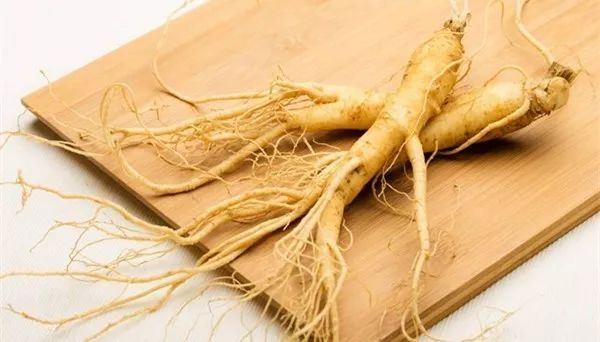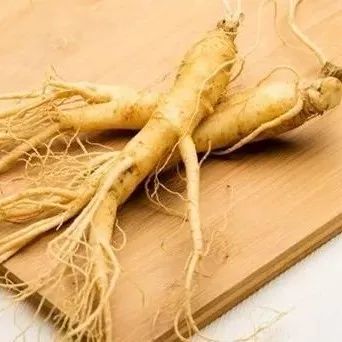
As autumn and winter approach, the consumption of ginseng becomes prevalent. However, there are many types of ginseng, including Ren Shen (Ginseng), Dan Shen (Salvia miltiorrhiza), Dang Shen (Codonopsis pilosula), Sha Shen (Glehnia littoralis), Hong Shen (Red Ginseng), Xi Yang Shen (American Ginseng), and Tai Zi Shen (Pseudostellaria heterophylla). What are the differences among them, and how should they be consumed? Let’s hear what TCM experts have to say.
Ren Shen:
Greatly tonifies Qi, the premier herb for deficiency
Ren Shen is known for its ability to greatly tonify Qi, calm the spirit, enhance intelligence, generate fluids, quench thirst, and combat aging. It is one of the most precious tonic herbs. It is indicated for severe illness, chronic disease, blood loss, and fluid depletion leading to Qi deficiency, as well as for symptoms like fatigue, weak pulse, insomnia with vivid dreams, palpitations, forgetfulness, and excessive sweating due to deficiency.
However, it is not suitable for those with excess heat or strong righteous Qi. Additionally, healthy children should avoid Ren Shen and similar tonics to prevent precocious puberty, which can hinder normal healthy development.
Best ways to consume——
1. When stewing, slice the ginseng and place it in a bowl, add an appropriate amount of water, seal the bowl, and steam it in a pot for 1-2 hours;
2. For sucking, slice the ginseng thinly and place it in the mouth to dissolve;
3. For infusion, crush the ginseng and place it in a tea bag, put it in a cup, add boiling water, and steep for 5 minutes before drinking.
Dan Shen:
Invigorates blood and dispels stasis
Dan Shen is an excellent herb for invigorating blood and dispelling stasis, with effects of promoting blood circulation, alleviating pain, calming the heart, and nourishing blood to calm the spirit. There are many preparations made from Dan Shen, commonly including Dan Shen drops and compound Dan Shen tablets.
Best ways to consume——
1. For Dan Shen wine, use Dan Shen slices along with saffron and other herbs, and soak in white liquor for about half a month before drinking. It is best to limit the amount and frequency of consumption;
2. Women can brew Dan Shen and motherwort tea in daily life. Take appropriate Dan Shen slices and motherwort, and steep them in hot water. It can be steeped multiple times but should not be consumed overnight.
Dang Shen:
Tonifies Qi and nourishes blood
Dang Shen is effective in nourishing blood and Qi, particularly beneficial for lung Qi and treating lung deficiency. It is suitable for those with various Qi deficiencies, fatigue, weakness in limbs, poor appetite, loose stools, and those prone to colds.
Modern research suggests that Dang Shen can treat anemia and enhance the body’s resistance.
Best ways to consume——
1. Use Dang Shen and goji berries to make soup, with 30 grams of Dang Shen, 30 grams of goji berries, and 150 grams of chicken. It is indicated for Qi and blood deficiency and poor appetite;
2. Cook Dang Shen, goji berries, and pig liver porridge with 20 grams of Dang Shen, 30 grams of goji berries, 50 grams of pig liver, and 60 grams of glutinous rice. It is indicated for liver and kidney deficiency, fatigue, and dizziness.
Sha Shen:
Nourishes Yin, clears the lungs, transforms phlegm, and stops cough
Sha Shen can be divided into southern and northern varieties, with similar effects. Northern Sha Shen is suitable for chronic cough due to lung Qi and Yin deficiency; southern Sha Shen is suitable for sore throat after febrile diseases.
Best ways to consume——
Take 50 grams of Sha Shen, 25 grams each of yam, lotus seeds, and lily bulbs, and one egg, and simmer into a soup. All the herbs used in this soup are beneficial for nourishing the lungs, nourishing Yin, and strengthening the spleen and stomach, helping to clear heat, nourish Yin, and stop cough.
Hong Shen:
Tonifies Yang Qi, suitable for Yang deficiency
Hong Shen is made by steaming fresh ginseng until it turns red and becomes hard. Due to the cooking process, it not only retains the Qi tonifying, fluid generating, and calming effects of ginseng but also has a warmer nature, stronger potency, and longer-lasting effects, making it exceptional for tonifying Yang Qi and nourishing Qi and blood.
Those with symptoms of pale complexion, cold hands and feet, and other signs of Yang deficiency can benefit from Hong Shen. However, those with Yin deficiency and excess heat should avoid it.
Best ways to consume——
1. There are many daily consumption methods, such as brewing tea or grinding into powder to swallow. Generally, for safety, 1-2 grams per day is sufficient; excessive amounts may lead to heat symptoms;
2. Cook porridge by slicing Hong Shen thinly and adding it during breakfast preparation;
3. Chew by slicing Hong Shen thinly and holding it in the mouth to chew, which has the effect of tonifying Qi and invigorating the spirit.
Xi Yang Shen:
Clears heat and nourishes Yin
Xi Yang Shen’s greatest advantage is its ability to tonify Qi and nourish Yin, benefiting the five organs without causing heat or dryness, hence it is also known as “fire-free ginseng.” The difference in effects between Xi Yang Shen and Ren Shen is that Ren Shen tonifies Qi and supports Yang, while Xi Yang Shen tonifies Qi and nourishes Yin.
Generally, Xi Yang Shen tea is suitable for older adults, those with chronic illnesses, and individuals with a weak constitution prone to wind-cold and colds. Young and vigorous individuals who are prone to anger should avoid it.
Best ways to consume——
1. Use Xi Yang Shen slices to brew water as tea, using 1-3 slices per serving, steeping in warm water, and consuming the slices afterward;
2. Those working in high temperatures during summer can hold Xi Yang Shen slices in their mouths to prevent heatstroke.
Tai Zi Shen:
Stable medicinal properties, tonifies Qi without causing heat
Tai Zi Shen has the effects of benefiting Qi, strengthening the spleen, and generating fluids to moisten the lungs. It is commonly used for spleen deficiency, fatigue, poor appetite, post-illness weakness, Qi and Yin deficiency, spontaneous sweating, thirst, and dry cough.
Compared to Ren Shen, Hong Shen, and Dang Shen, Tai Zi Shen’s Qi tonifying power is not as strong, but it does not have excessive drying properties, thus it is especially suitable for those with Qi deficiency who are prone to heat.
It can also enhance immune function, increasing the body’s defense against various harmful stimuli and boosting metabolism.
Best ways to consume——
1. Brew Tai Zi Shen in water, ideally at 90°C, using 10 grams per serving as a tea substitute;
2. Crush Tai Zi Shen into a bag, using 6-10 grams as a tea substitute. Even so, many effective components may not dissolve during the brewing process, so it is recommended to use a thermos to steep it for maximum effect.
Source: Health Times (ID: jksb2013)
This issue was edited by: Cui Peng, Zhao Yajiao

If you find this helpful, please like it↓↓↓

